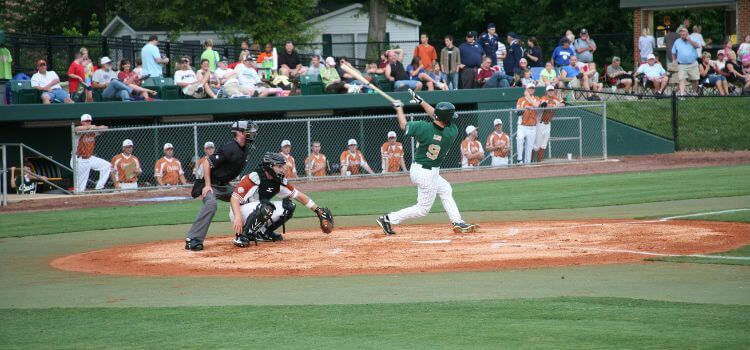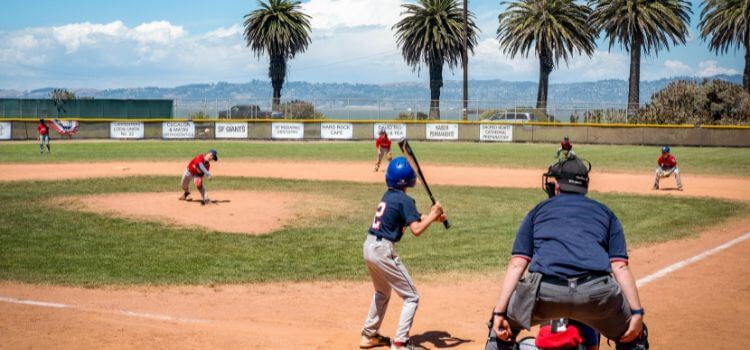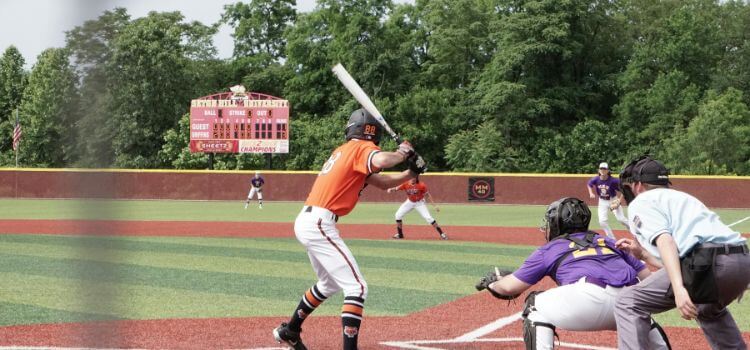As an Amazon Associate, I earn from qualifying purchases.
Major League Baseball (MLB) draft picks undergo a unique process after being selected, and the timeline to their debut in professional games can vary significantly. This guide provides an in-depth look at the journey for MLB draft picks, outlining key milestones and factors that determine when they might begin playing. From the signing process to minor league assignments and beyond, this article covers the entire progression to help fans understand what it takes for these young talents to reach the big leagues.
Understanding the MLB Draft Process

The MLB Draft occurs every year, usually in early to mid-July, where major league teams select eligible amateur players from high schools, colleges, and international talent pools. Unlike other major sports leagues, the MLB draft process is complex and involves several steps before players can start their journey to the major leagues.
Draft Eligibility and Selection
To be eligible for the MLB draft, players typically need to be:
High school graduates significantly required from the U.S., Canada, or Puerto Rico,
College players who have ultimately properly completed their junior or senior year, or
Junior college players from two-year schools in the U.S.
The draft usually has 20 rounds, and each team has a turn to select players. The journey for high-ranking picks can be faster, while later-round selections may face a longer path.
Signing and Contract Negotiation

After being drafted, players have until mid-August to sign with the team that selected them. The signing process is crucial because it dictates a player’s journey toward debuting in professional games. Each team has a predetermined “bonus pool,” or signing budget, that they use to negotiate contracts, especially for high-value picks.
Top Draft Picks: These players, particularly those in the first or second rounds, are likely to sign contracts quickly, often securing large signing bonuses.
Unsigned Picks: If a draft pick does not agree to a contract, they may choose to return to college or seek a different route and may become eligible for future drafts.
The Role of the Signing Bonus
The signing bonus often motivates players, as the earlier rounds tend to offer the most lucrative rewards. Top-tier players who receive significant bonuses are typically expected to progress through the ranks more quickly, as teams have invested heavily in them.
Minor League Assignment: The First Step in Pro Baseball
Once players sign, they’re typically assigned to a minor league team within the franchise’s system. Minor league levels include:
Rookie Ball: Often the first stop for new draftees, where they experience the professional game for the first time.
Class A (Low and High): The next step up, where players refine their skills with more structured training and competition.
Double-A and Triple-A: These levels are more competitive, with players in Triple-A closest to MLB readiness.
Each level acts as a developmental stage, allowing players to adapt to the speed, skill, and mental demands of professional baseball.
How Much Does It Take for Draft Picks to Ensure Reach the MLB?

The journey to the MLB varies greatly depending on factors such as the draft round, skill level, and the player’s position.
Fast-Track Prospects
Top draft picks with standout abilities, especially those from high rounds, sometimes receive accelerated development schedules. Players drafted in the top five rounds, especially those with exceptional skill levels, often make their MLB debuts within a few years, especially if they perform well in the minors.
Standard Development Timeline
For most players, the typical timeline from draft to MLB debut is three to five years. This time frame allows for gradual development across all levels, allowing players to develop at their own pace without overwhelming pressure to perform immediately.
Late Bloomers and Special Cases
Not every player follows a linear path, and some might spend longer periods at certain levels due to position-specific skills or injury rehabs. Late bloomers may take up to seven years or more to reach the MLB, especially if they were selected in later rounds or need additional development time.
What Determines How Soon a Draft Pick Starts Playing?
Several factors influence how quickly a draft pick progresses from signing to their first MLB game. These include:
Performance in Minor League Levels: Players who excel at each level may receive early promotions, fast-tracking their journey.
Physical and Mental Readiness: Developing the stamina for a 162-game season and handling the pressure of big-league competition is critical.
Team Needs and Position: Draft picks who play positions with fewer MLB-ready players in the organization may get promoted more quickly.
Exceptional Cases: Players Who Skipped the Minors

Although rare, some draft picks have bypassed the minors and debuted in the MLB shortly after being drafted. Notable players who made immediate MLB debuts include Dave Winfield (1973), John Olerud (1989), and Mike Leake (2010). These cases are exceptional and require unique skill sets or immediate team needs.
Frequently Asked Questions
How long does it significantly take for MLB draft picks to reach the particular major leagues?
The journey to the MLB for most draft picks takes three to five years. This time significantly allows crucial players to enhance through each level of the minor league system. However, top prospects with exceptional skills may reach the majors in a shorter time, while others might take longer, depending on their progress and team needs.
Can MLB draft perfect-fit picks to skip the minor leagues and go directly to the majors?
Although rare, it is possible for MLB draft picks to bypass the minors and go straight to the major leagues. A few players, like Dave Winfield and Mike Leake, have achieved this. However, these cases are exceptional and usually depend on the player’s readiness and a team’s immediate need for their position.
What happens problems face-to-face if a draft pick does not sign with the team that selected them?
If a draft pick does not sign, they retain their amateur status and can either return to college or participate in future drafts. This scenario often occurs if players are unsatisfied with the signing bonus or feel they need more development before entering professional leagues.
What role does the signing bonus play in a draft pick’s career?
The signing bonus serves as a particular ethical incentive for players to join the franchise that drafted them. High-value bonuses are typically offered to top draft picks, reflecting the team’s investment in their potential. These players are often given a faster path through the minor leagues as the team has made a substantial financial commitment.
What factors affect how quickly a draft pick advances through the minor leagues?
Several factors influence a player’s advancement speed, including their performance at each minor league level, physical and mental readiness, and team needs. Players who perform well may get promoted quickly, while those who need more time to adjust or play less-in-demand positions may take longer to progress.
Conclusion
For MLB draft picks, the journey to the big leagues is a mix of talent, timing, and team needs. Some players make their debuts within a year, while others might take several seasons to reach that level. Whether it’s through a quick ascent or a carefully managed progression, the pathway from draft to MLB showcases each player’s commitment, adaptability, and drive.
As an Amazon Associate, I earn from qualifying purchases.
Leave a Reply